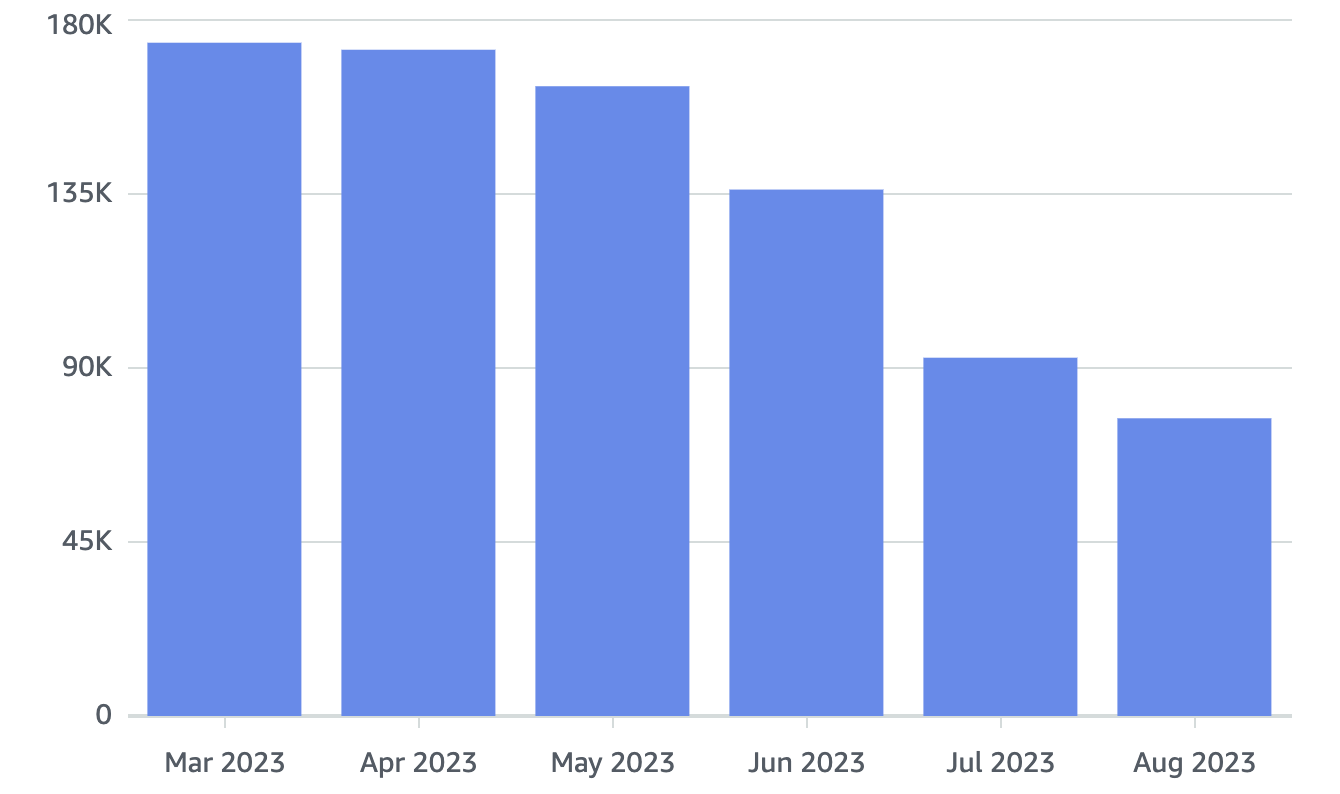, 5 min read
Nima Badizadegan on Cloud Computing
Nima Badizadegan, an electrical engineer, who previously worked almost three years for Google, wrote Use One Big Server on his blog. He talks on cloud computing, not specially on cloud storage. He starts with a description of a cloud machine from Microsoft Azure having an AMD CPU with 64 core, 128 threads. He notes:
In total, this server has 128 cores with 256 simultaneous threads. With all of the cores working together, this server is capable of 4 TFLOPs of peak double precision computing performance. This server would sit at the top of the top500 supercomputer list in early 2000. It would take until 2007 for this server to leave the top500 list.
On cloud costs:
Being cloudy is expensive. Generally, I would anticipate a 5-30x price premium depending on what you buy from a cloud company, and depending on the baseline. Not 5-30%, a factor of between 5 and 30.
He dissects common objections on on-prem hardware.
- But if I use Cloud Architecture, I Don’t Have to Hire Sysadmins -- no.
- But if I use Cloud Architecture, I Don’t Have to Do Security Updates -- no.
- But if I use Cloud Architecture, I Don’t Have to Worry About it Going Down -- no.
- But I can Develop More Quickly if I use Cloud Architecture -- no.
- My Workload is Really Bursty -- this is a valid objection.
To the last topic of "burstly" workload, I would add that the typical rental of servers for a very limited period of time is a truly suitable case for cloud. This is similar to renting a car, instead of owning one, if you know in advance, that you only need the car for a week, or any other limited period.
So taking costs, developing effort, and maintenance into considerations, it is obvious that this rush into cloud is often not substantiated by facts. This confirms the statements given in Various Quotes from Kristian Köhntopp.
A similar post was written by Wille Faler, "Nobody ever got fired for buying AWS". This title is chosen as to mimic the common phrase "nobody ever got fired for buying IBM". In the post he concludes:
That AWS is over-charging becomes all the more apparent if you shop around with smaller cloud providers and notice AWS prices might in some cases be 8X or more what others charge. (...) The AWS stacks are 6.25X and 9.7X more expensive than our budget stack respectively.
These are essentially the same findings as given by Nima Badizadegan.
Added 06-Nov-2022: A rant by Simon Sharwood on "The Register" on cloud can be found here: The world was promised 'cloud magic'. So much for that fairy tale.
Added 21-Feb-2023: David Heinemeier Hansson from 37signals.com wrote We stand to save $7m over five years from our cloud exit. Also see Dropbox slips 500PB into its Magic Pocket, not spread over AWS: "Shifts 90% of your files from Amazon to in-house systems".
Heinemeier adds on 23-Jun-2023:
The back of the napkin math is that we'll save at least $1.5 million per year by owning our own hardware rather than renting it from Amazon. And crucially, we've been able to do this without changing the size of the operations team at all. Running our applications in the cloud just never provided the promised productivity gains to do with any smaller of a team anyway.
The main difference here is the lag time between needing new servers and seeing them online. It truly is incredible that you can spin up 100 powerful machines in the cloud in just a few minutes, but you also pay dearly for the privilege. And we just don't have such an unpredictable business as to warrant this premium. Given how much money we're saving owning our own hardware, we can afford to dramatically over-provision our server needs, and then when we need more, it still only takes a couple of weeks to show up.
Look at it this way. We spent about half a million dollars buying two pallets of servers from Dell, which added a combined 4,000 vCPUs with 7,680 GB of RAM and 384TB of NVMe storage to our server capacity. This hardware was more than adequate to run all the heritage services we brought home, together with HEY, and give our other Basecamp operations a hardware refresh. And it was less than a third the cost of what we predict we'll be saving EVERY YEAR! This is hardware we'll be amortizing over five years.
Added 13-Mar-2023: See Efim Mirochnik from Ahref in How Ahrefs Saved US$400M in 3 Years by NOT Going to the Cloud. This again confirms that cloud is way more costly than having your own hardware.
Added 11-Apr-2023: See High costs drive cloud repatriation, but impact is overstated.
Added 30-Jul-2023: From Cloud computing is no longer a slam dunk:
Ten years ago, the reasons for moving to a public cloud consumption model were solid. We avoided the costs of hardware and software, the pain and expense of maintaining these platforms, and leveraged computing and storage as a utility. The sell was operational cost savings, first and foremost by avoiding many capital expenses (capex versus opex).
Further, the author, David Linthicum, now concludes:
Cloud computing should never be a default solution.
The reason mainly being that hardware costs going down:
As the prices of traditional servers decrease, it is important to consistently reevaluate our objectives for utilizing these systems.
Added 19-Sep-2023: David Heinemeier Hansson shows that even after one year operation costs went down by $1m.

Our cloud spend (sans-S3) is down by 60% already. From around $180,000/month to less than $80,000. That's a cool million dollars in savings at the yearly run rate